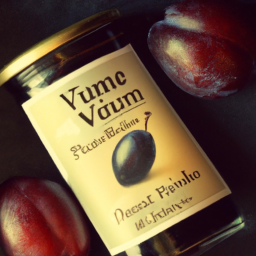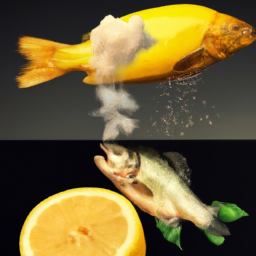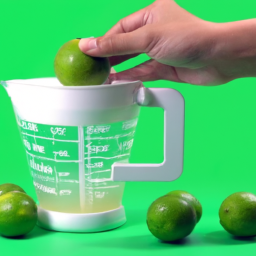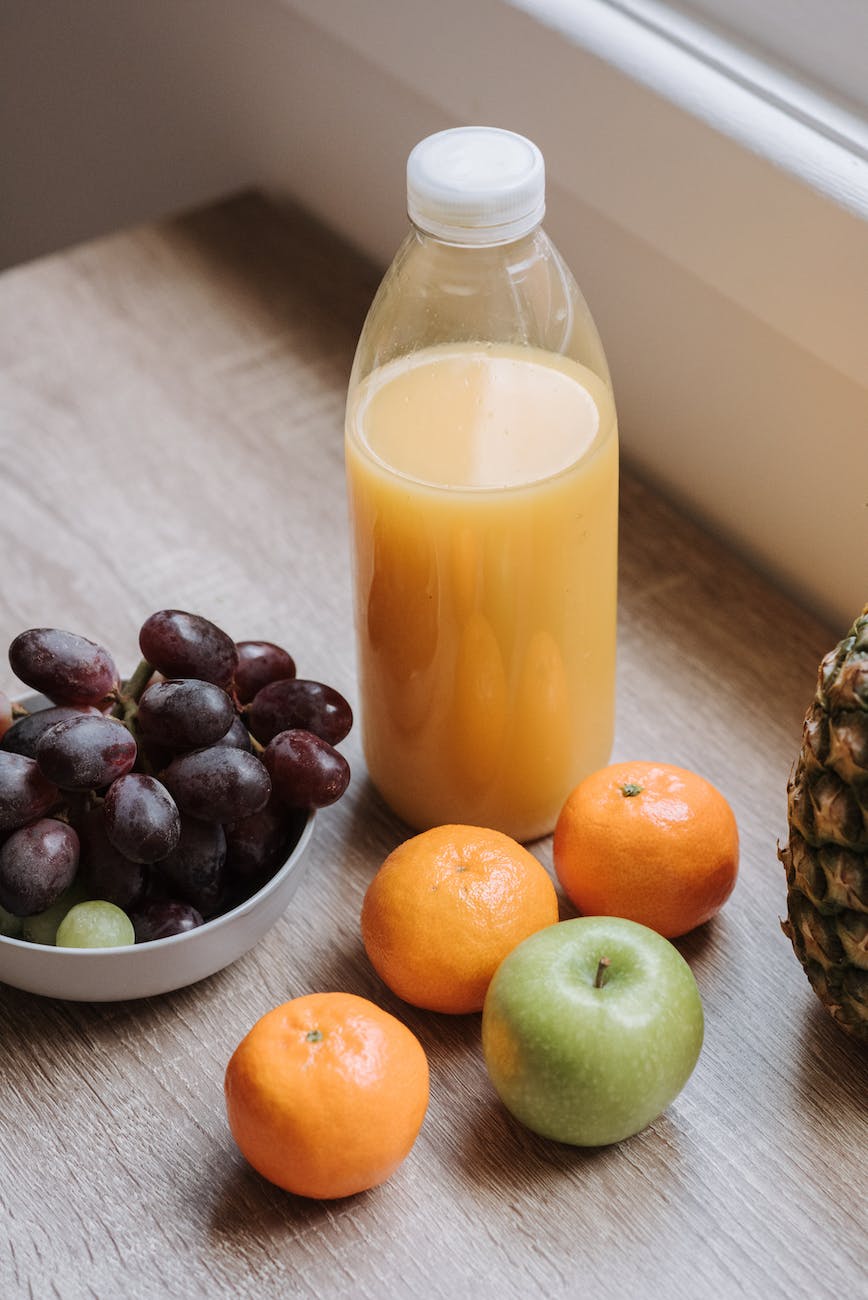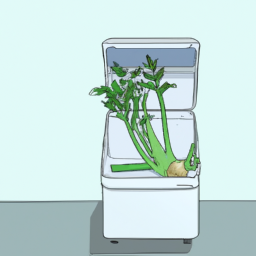Prune juice has long intrigued me. As a child, I watched my grandparents drink it regularly, sparking my curiosity about its taste. Now, as an adult, I am excited to share my thoughts on the unique flavor of this juice.
Prune juice is made from dried plums, also known as prunes. It has been touted for its digestive benefits and is often recommended for those suffering from constipation. But beyond its health benefits, I was curious about how it tasted.
Was it sweet, sour, or bitter? Did it have a strong flavor or was it mild? Join me as we explore the taste of prune juice and discover how it compares to other juices.
Key Takeaways
- Prune juice has a complex and nuanced flavor profile that is both sweet and tangy, with a velvety mouthfeel and pleasant aftertaste.
- It is made from dried plums and has been consumed for centuries in traditional medicine practices.
- Prune juice is high in fiber and sorbitol for digestion, and contains antioxidants, vitamins, and minerals for immune system and overall health.
- While it is a great addition to any diet and packed with nutritional benefits, it is important to start with small amounts and gradually increase intake over time to avoid potential side effects of consuming too much.
What is Prune Juice?
If you’ve never tried it before, you might be wondering what prune juice tastes like – well, let me tell you, it’s a deliciously sweet and tangy beverage that’s packed full of health benefits!
Prune juice is made from dried plums that have been pureed and then had their water content removed. It’s commonly used as a natural laxative, as it contains high levels of fiber and sorbitol, which helps to regulate digestion.
But prune juice isn’t just beneficial for digestion – it also contains high levels of antioxidants, vitamins, and minerals that can help to boost your immune system and improve overall health.
However, it’s important to note that consuming too much prune juice can lead to potential side effects such as diarrhea, bloating, and gas. So if you’re new to drinking prune juice, it’s best to start with a small amount and gradually increase your intake over time.
With that said, let’s move on to the origins of prune juice and how it came to be such a popular beverage.
The Origins of Prune Juice
Although its exact origins are uncertain, prune juice has been consumed for centuries and has played a significant role in various cultures’ traditional medicine practices. Some historians speculate that prune juice originated in ancient Rome, where it was used as a natural laxative. Others believe that prune juice has its roots in ancient Persia, where it was known for its digestive properties.
Regardless of its specific origins, the production process of prune juice has remained relatively consistent over time. Prune juice is made by drying and then rehydrating prunes, which are essentially dried plums. Once the prunes are rehydrated, they are blended into a juice and filtered to remove any pulp or skins.
The resulting juice is high in fiber and nutrients, making it a popular choice for those looking to improve their digestive health. So, let’s delve into the nutritional benefits of prune juice.
The Nutritional Benefits of Prune Juice
You’ll be pleased to know that prune juice is packed with essential vitamins and minerals that can benefit your overall health. Prunes themselves are a great source of fiber, potassium, and vitamin K, and these nutrients are preserved in prune juice. Additionally, prune juice is high in antioxidants, which are important for protecting the body against damage from harmful substances.
To give you a better idea of the nutritional benefits of prune juice, take a look at the table below:
| Nutrient | Amount per serving |
|---|---|
| Fiber | 3 grams |
| Potassium | 290 milligrams |
| Vitamin K | 19% of the daily value |
| Antioxidants | High levels |
As you can see, prune juice benefits your health in a number of ways. From promoting healthy digestion with its high fiber content to supporting bone health with its vitamin K content, this juice is a great addition to any diet. Now, let’s move on to the next topic: the flavor profile of prune juice.
The Flavor Profile of Prune Juice
Get ready to experience a sweet and tangy taste explosion with prune juice – perfect for those who want a refreshing and delicious beverage option! The flavor profile of prune juice is complex and nuanced, providing a truly unique sensory experience.
The aroma notes are slightly sweet with a hint of tartness, and the mouthfeel is smooth and velvety. When it comes to sweetness level, prune juice is on the sweeter side, but the acidity balance keeps it from being overly cloying. The aftertaste is pleasant and subtle, with a lingering sweetness that is not overpowering.
Consumers can enjoy prune juice on its own or experiment with flavor combinations by adding it to other juices or smoothies. Ultimately, the flavor profile of prune juice is one that appeals to a wide range of consumer preferences, making it a versatile and delicious choice.
As you can see, prune juice offers a unique flavor profile that is both sweet and tangy, with a velvety mouthfeel and pleasant aftertaste. But how does prune juice compare to other juices? Let’s explore that in the next section.
How Does Prune Juice Compare to Other Juices?
When it comes to juice, I’m always on the hunt for something that’s both delicious and nutritious. While I love my trusty apple juice, I’m always open to trying new flavors.
Recently, I’ve been curious about cranberry juice and grape juice, and I’m eager to compare their taste profiles to my go-to favorite. I’m excited to explore the unique flavors of these juices and see how they stack up against each other.
Apple Juice
Apple juice has a naturally sweet taste due to its high sugar content, with one cup containing approximately 24 grams of sugar. It is a popular choice among children and adults alike, and can be found in most grocery stores.
As someone who enjoys apple juice, I appreciate its versatility as an ingredient in various recipes, such as smoothies and cocktails. Additionally, it serves as a healthier alternative to sugary sodas and other fruit juices.
While apple juice is delicious on its own, there are also numerous apple juice alternatives that can be explored. For instance, one can mix apple juice with other juices to create unique flavor combinations. Some popular apple juice recipes include apple cider, apple punch, and apple-mint juice.
However, when compared to other fruit juices, such as cranberry juice, apple juice falls short in terms of its health benefits.
Cranberry Juice
As much as I love apple juice, sometimes I like to switch it up and try something different. That’s when cranberry juice comes in handy. It has a tart and slightly bitter taste that may not be for everyone, but I personally enjoy it.
It’s not overly sweet like some juices can be, and it has a refreshing quality to it that makes it perfect for a hot summer day. If you’re looking for a way to jazz up your cranberry juice, try making some cranberry juice cocktails.
There are endless possibilities when it comes to mixing cranberry juice with other ingredients. You can add vodka and a splash of lime for a classic cranberry vodka, or mix it with sparkling water and a squeeze of lemon for a refreshing mocktail.
Aside from its taste, cranberry juice also has some health benefits. It’s known for its ability to prevent urinary tract infections and reduce inflammation in the body. It’s also a good source of vitamin C and antioxidants.
So next time you’re in the juice aisle, consider picking up a bottle of cranberry juice and giving it a try.
Moving on to grape juice, it’s another classic choice that has been around for ages.
Grape Juice
You can’t go wrong with grape juice – it’s a childhood favorite that still brings back memories of carefree days. The sweet and tangy flavor of grapes makes for a refreshing and satisfying drink that is perfect for any occasion. Whether you’re looking for a quick pick-me-up in the morning or a refreshing beverage to enjoy with your meal, grape juice is a great choice.
If you’re looking for grape juice alternatives, there are plenty of options available. You can try mixing grape juice with other juices like apple or orange for a unique flavor combination. You can also experiment with grape juice recipes, like adding a splash of lemon juice or a sprinkle of cinnamon for an extra kick.
Whatever you choose, grape juice is a delicious and nutritious addition to your diet. And speaking of nutritious drinks, let’s talk about how to incorporate prune juice into your diet.
How to Incorporate Prune Juice into Your Diet
Incorporating prune juice into your diet is like adding a smooth jazz riff to your daily routine – it may take some getting used to, but the benefits are undeniable.
Prune juice is packed with vitamins and minerals, including vitamin C, iron, and potassium. It’s also a great source of fiber, which can help regulate digestion and prevent constipation.
Not to mention, prune juice has been shown to have a positive impact on bone health, as it contains high levels of antioxidants that can help prevent osteoporosis.
If you’re unsure how to incorporate prune juice into your diet, there are plenty of recipe ideas available online. You can mix it with other juices, like apple or orange, to create a tasty and nutritious beverage. Or, you can use it as a base for smoothies, adding in other fruits and vegetables for added flavor and nutrition.
Whatever method you choose, be sure to start slowly and drink plenty of water throughout the day. This will help your body adjust to the new addition and prevent any potential digestive issues. With a little patience and experimentation, you’ll soon discover the many benefits of incorporating prune juice into your daily routine.
Drinking prune juice may seem daunting at first, but the benefits are worth it.
In the next section, we’ll discuss what to expect when drinking prune juice and how to make the most of its health benefits.
What to Expect When Drinking Prune Juice
When you take a sip of this fruity elixir, your taste buds will dance with the sweet and tangy flavor of blended fruits. Prune juice is not just beneficial for its high fiber content, but also for its delicious taste.
The sweetness of the juice comes from the natural sugars present in the fruit, and the tangy taste is a result of the acidic content. Aside from its delicious taste, prune juice also has several digestive benefits.
The high fiber content helps regulate bowel movements, while the sorbitol in the juice acts as a natural laxative. Additionally, prune juice is a great source of hydration, which is essential for maintaining healthy digestion. Drinking prune juice regularly can provide your body with all the necessary nutrients for a healthy digestive system.
Now, let’s discuss how to choose the right prune juice.
Choosing the Right Prune Juice
To get the most out of your digestive health, it’s important to pick a prune juice that packs a punch with its fiber content and natural sweetness. When it comes to choosing the right prune juice, there are a variety of brands available on the market. However, not all brands are created equal. Some may have added sugars or preservatives, while others may have lower fiber content. To make the best selection, it’s important to compare brands and read labels carefully.
To help you navigate the world of prune juice brands, I’ve created a table below outlining some popular options and their respective health benefits. Keep in mind that the best prune juice for you may depend on your individual health needs and preferences. Use this table as a starting point to find a prune juice that will help support your digestive health and taste great too. Now, let’s move on to the next section where I’ll share some tips for storing and serving prune juice.
| Prune Juice Brand | Fiber Content (per 8 oz.) | Additional Health Benefits |
|---|---|---|
| Sunsweet | 3 g | Contains potassium and vitamin K |
| PlumSmart | 2 g | Contains antioxidants |
| R.W. Knudsen | 4 g | Organic and no added sugars |
| Santa Cruz | 3 g | Organic and non-GMO |
| Gerber | 3 g | Specifically formulated for infants and toddlers |
Tips for Storing and Serving Prune Juice
Now that we’ve discussed how to choose the right prune juice, let’s talk about how to store and serve it. As someone who enjoys a glass of prune juice every morning, I’ve learned a few tips and tricks to ensure that it stays fresh and delicious.
First and foremost, it’s important to store prune juice in the refrigerator. This will help to preserve its flavor and prevent it from spoiling. Additionally, it’s a good idea to keep the juice in its original container, as this will help to maintain its freshness.
When it comes to serving prune juice, there are a few different options to consider. Here are three of my favorite serving suggestions:
- Serve it chilled over ice for a refreshing and invigorating drink.
- Mix it with sparkling water for a fizzy, low-calorie alternative to soda.
- Use it as a base for smoothies or other blended drinks for a boost of fiber and nutrients.
By following these simple tips for storing and serving prune juice, you can enjoy this delicious and nutritious beverage any time of day. Whether you prefer it straight up or mixed with other ingredients, there are plenty of ways to incorporate prune juice into your daily routine.
Frequently Asked Questions
Is prune juice better for you than other fruit juices?
I find prune juice to be a healthy alternative to other fruit juices due to its high nutritional value. It contains fiber, vitamins, and minerals. Compared to prune juice alternatives, it has a lower sugar content.
How much prune juice should I drink in a day?
Personally, I recommend drinking no more than 8 ounces of prune juice per day to reap the benefits of its high fiber and nutrient content. However, overconsumption can pose risks such as diarrhea and abdominal discomfort.
Can prune juice help with constipation?
Prune juice is effective for constipation relief due to its high fiber content. However, alternatives such as fiber-rich fruits, vegetables, and whole grains can also aid in regularity.
Is it safe to drink prune juice while pregnant?
As a pregnant woman, I’m always on the lookout for safe and satisfying ways to indulge my pregnancy cravings. While prune juice can help with constipation, I prefer to explore alternative options to keep my baby and me healthy.
Can prune juice cause any negative side effects?
Prune juice can cause gastrointestinal discomfort, such as bloating and gas, especially when consumed in large amounts. It may also have an impact on blood sugar levels, so those with diabetes should monitor their intake.
Conclusion
After trying prune juice for the first time, I was pleasantly surprised by its unique taste. It had a deep, rich flavor with a hint of sweetness that lingered on my tongue. I could taste the tartness of the prunes, but it was balanced out by a smooth, almost velvety texture. It was unlike any other juice I had tried before.
As I continued to drink prune juice, I noticed how it made me feel. Not only did it taste delicious, but it also provided me with a range of health benefits. I felt more energized, my digestion improved, and I even noticed an improvement in my skin.
Prune juice has become a regular part of my diet, and I can’t imagine going without it. If you’re looking for a juice that not only tastes great but also provides numerous health benefits, give prune juice a try. With its unique flavor, smooth texture, and range of nutrients, it’s a great addition to any diet.
Just be sure to choose a high-quality juice and store it properly to ensure it stays fresh and delicious.
Ilana has been a vegan for over 10 years. She originally made the switch for health reasons, but soon found herself becoming more and more passionate about the ethical and environmental implications of a vegan lifestyle. Ilana is the author of The Graceful Kitchen, a blog all about veganism. She loves to cook up delicious and nutritious vegan meals, and share her recipes with others who are interested in leading a cruelty-free life. Ilana is also a strong advocate for using whole foods as the foundation of a healthy diet, and believes that going vegan is one of the best ways to achieve this.
